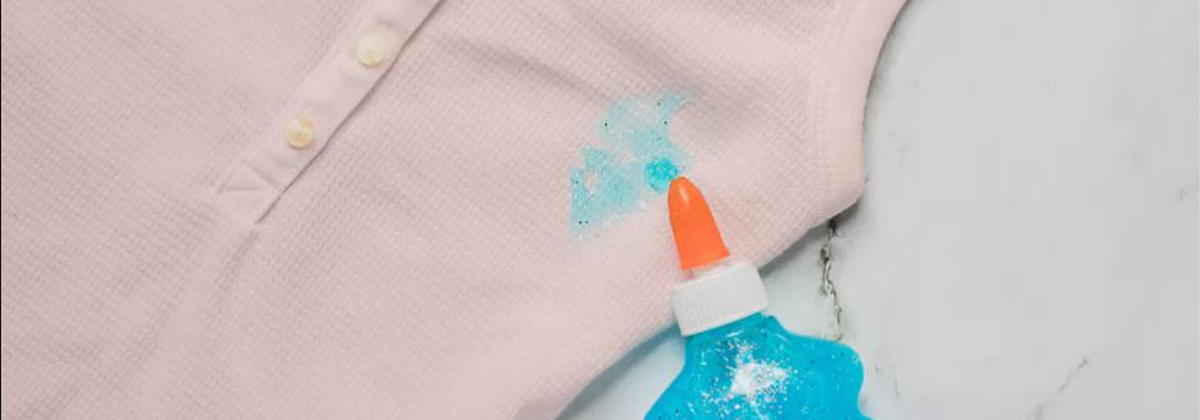03 Feb Removing Different Types of Glue Stains From Clothes and Carpets (Part 1)
Every family regularly uses glue to stick materials together or to repair broken equipment. There are many types of adhesives, from simple white adhesive to rubber cement. Some glues, such as commercial or nail glue, and adhesive residues, are more difficult to remove due to their combination. Most of the time, the glue stains can be removed from clothes and carpets. But if any glue is spilled on clothes labelled “laundry only”, go to a professional laundromat for best results. If the stain persists, repeat the procedure. After removing the stain, wash the clothes as usual. Be sure not to put the clothes in the dryer until the stain is completely gone. Here are some tips to remove glue from clothes and carpets.
Removing commercial glue stains
Materials required
- Dull knife or plastic for shaving
- Freezer or ice pack
- Solvent or stain remover
- Strong laundry detergent
Commercial glue, sometimes called construction adhesives, are very difficult to remove from clothing or materials. If you come in contact or are prone to collisions, buy a solvent or stain remover too. The type of detergent should also be strong and wash the cloth at the temperature listed on the fabric label. Always test any solvent or stain remover on a concealed area of clothing or carpet before use to have any colour changing or not.
Instructions
- Before removing the glue, let it dry on the fabric or carpet. Don’t try to clean it. Wiping off the wet glue will only cause the fibres to stick deeply.
- Using a dull knife, remove the extra stains. Then let the area dry.
- Put the cloth in the freezer for an hour. Once the glue is frozen, you can usually break most of it off the fabric.
- If stains remain, clean the area with solvent or stain remover.
Removing nail glue stain
Nail glue is the same chemical formula as glue. The main material is cyanoacrylate; An acrylic resin that can be removed almost immediately. Don’t panic or try to remove the glue when it’s spilled on fabrics and carpets. Because by doing so, you’re only spreading it around. Allow the glue to dry before removing it. Some fabrics can’t resist nail polish remover. Fabrics made from acetate, triacetate and modacrylic are dissolved in acetone or paint thinner. First, read the clothing guide labels. If you use nail polish remover on these materials, it will create holes that can’t be fixed. Consult a professional dry cleaner to remove nail glue from these fibres. To wash this stain, you can use laundry detergent or dishwashing liquid detergent. Then wash it at the water temperature listed on the fabric label.
Materials required
- Acetone based nail polish remover
- cotton swab
- Stain cleaner or strong laundry detergent
- Water (for carpets)
- Dishwashing liquid detergent (for carpets)
- Distilled white vinegar (for carpets)
- White cloth, towel or sponge (for carpet)
- A dull knife
Instructions
- Dip a cotton ball in acetone-based nail polish remover (methyl acetate, which is a milder cleanser, doesn’t work). Try it on a small, inner seam to make sure the nail polish remover doesn’t damage the fabric or carpet or discolour it.
- Work from the outside of the stain to the inside. Dip one cotton swab into a warm paraffin solution. Let it stay on the adhesive for a minute or two.
- Use a dull knife to remove the glue. You may need to repeat this process several times.
- When you feel all the glue is removed from the fabric, clean the area with a cleaner or a little strong detergent for clothes. Then wash the clothes according to the instructions on the fabric label.
- Before putting the clothes in the dryer, check the glue stains. If anything remains, you may need to repeat the process. Drying on high heat fix stains and make them impossible to remove. So before using the dryer, make sure the stain is completely removed.
- If you find nail glue stains on the carpet, mix a solution of a cup of warm water, a teaspoon of dishwashing liquid detergent and two tablespoons of distilled white vinegar. Then wait for the glue to dry. After it dips a clean white cloth, towel or sponge in the solution and rubs on it quickly. Rinse the stain with a clean, damp cloth and allow the stain to dry.




Sorry, the comment form is closed at this time.